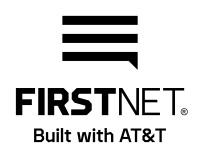The future of the ambulance is connected and electric; and smart, innovative EMS agencies are already preparing for that future.
Having an ambulance that is optimized for communication between dispatch, the EMS provider and the receiving hospital – along with a quieter, smoother ride – facilitates the delivery of patient care in the ambulance while preparing the facility to accept the patient with critical medical information already at hand.
Here’s why EMS agencies should take advantage of emerging communications technologies and electric vehicles at their first opportunity so they can start reaping the benefits now.
| WATCH: Conquering pediatric airway panic: Training, tools and tough truths
The connected ambulance
From the first dispatch to delivery to the facility, EMS professionals need to rely on clear, robust and secure communications. They also need the ability to capture patient data from mobile biomedical devices like heart monitors/defibrillators and transmit data into the electronic patient care record from the first point of contact to the transfer to the emergency department.
The first challenge is to locate the patient needing care – whether in an urban office or out in the woods, miles from the nearest hospital or cell tower – and then provide continuous monitoring and care during transport.
FirstNet, Built with AT&T, enables the connectivity agencies need – when they need it – throughout the continuum of care with four foundational technologies.
1. FirstNet-enabled router with 5G Wi-Fi connectivity. The foundation of that connectivity is a FirstNet-enabled router with 5G Wi-Fi connectivity. The router delivers highly accurate GPS information that feeds directly into computer-aided dispatch (CAD) and on-board navigation so the EMS provider can navigate directly to the patient location. On-board Wi-Fi allows mobile devices – tablets, phones and even body cameras – to communicate with medical devices and with the receiving facility from the back of the ambulance or the patient’s side on-scene.
As every EMS provider knows, medical emergencies can happen anywhere – in a basement or parking garage where a cell phone signal can get dropped, or in an area hit by a natural or manmade disaster. When Wi-Fi is not available, LTE steps in.
2. FirstNet MegaRange. No matter where your response takes you, the FirstNet MegaRange high-power user equipment (HPUE) solution can go where regular LTE can’t. MegaRange helps boost the range of LTE signals by up to six times, helping ensure EMS providers can still perform functions like cardiac monitoring, monitoring receiving hospital status, and sending and receiving prehospital instructions, even from hard-to-reach rural areas and “urban canyons” of concrete and steel that can interfere with lower-power LTE signals.
3. FirstNet-connected smart device with push-to-talk (PTT). Another essential technology for always-on connectivity and coordination of a mutual-aid event is a FirstNet-connected smart device with mission-critical PTT functionality. PTT enables EMS providers to use a smart device to maintain one-to-many or one-to-one critical communications, even outside the range provided by a local land mobile radio (LMR) system, and enables the sharing of video, images, data, text, voice, location and more.
4. FirstNet-enabled LMR. Further enhancing the delivery of services even in a worst-case scenario where LTE is not available is a FirstNet-enabled land mobile radio (LMR). The FirstNet-enabled LMR extends the capability of a medical radio system used for prehospital alerts and medical direction.
EMS providers also need the ability to undertake a variety of tasks in a mobile operational environment and communicate with a receiving facility for optimal patient care. With a FirstNet-supported tablet, EMS professionals can capture, use and transmit critical biomedical information from a 12-lead EKG, cardiac monitor, mobile MRI, ultrasound and other assessment and vital sign monitoring tools, as well as complete electronic patient care reports as they go.
The electric ambulance
By executive order, the state of California has taken the most significant steps by requiring all vehicles sold in the state be zero-emission by 2035. New York City has pledged to reduce greenhouse gas emissions by 80% by 2050. As more communities pledge to reduce greenhouse gas emissions, that means the move away from gas-powered to electric vehicles is inevitable.
Ambulance manufacturers are already embracing the change and adding all-electric ambulances to their fleets. Several EMS agencies and private ambulance companies like AMR and DocGo are already using van-style electric ambulances and finding a range of benefits that go beyond reducing pollution and complying with green initiatives.
Here are some of the top benefits of electric ambulances:
- A quieter, smoother ride. Anyone who has tried to attach a 12-lead EKG in the back of a moving ambulance can attest to the difficulty of trying to provide quality patient care or communicate critical information over the bounce and noise. A battery-powered electric motor is virtually silent, and power is delivered without the transmission, exhaust and other mechanical systems of a gas-powered vehicle. Consequently, the ride in an electric ambulance is quiet and smooth compared to a traditional ambulance, equating to better prehospital patient care.
- Better vehicle control. Electric ambulances can be built with a lower center of gravity, giving better vehicle control and making them less likely to tip over when navigating around corners or maneuvering in inclement weather.
- Cost savings. Although electric vehicles may cost more up front, the operating costs of electricity and maintenance over time are generally lower than traditional vehicles. Lower operating costs and eliminating the need for expensive fuel is a welcome benefit for budget-strapped EMS agencies.
- Healthier environment. Electric ambulances help provide not just a healthier environment, they also provide a healthier working environment for EMTs, paramedics and patients who are not exposed to exhaust fumes a traditional ambulance emits.
Huge advances in 5G communications technology, mobile medical devices and electric ambulances are already enhancing the ability of EMS professionals to improve prehospital care for patients. Innovative EMS agencies are seizing the opportunity to enjoy the benefits of these technologies now, preparing for a connected, electric future that in many ways is already here.
FirstNet and the FirstNet logo are registered trademarks and service marks of the First Responder Network Authority. All other marks are the property of their respective owners.
This article, which was originally published in February 2024, appeared in “EMS1 Guide to Ambulance Electrification” and has been updated.





